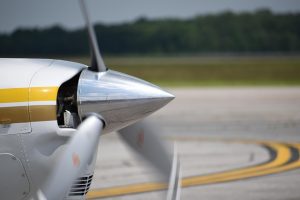
The turboprop is a common type of aircraft engine. Not to be confused with turbofans, it features an air intake, compressor, combustion chamber and propeller.
Air from outside the aircraft enters the turbofan via the air intake. The compressor will then pressurize the air. The highly compressed air is mixed with fuel in the combustion chamber and ignited, thereby generating power that turns the connected propeller. Below are five common myths about turboprops.
#1) Super Loud
Some people assume that turboprops are loud because they feature a spinning propeller. While certain turboprops are, in fact, louder than turbofans, others are actually quieter than their counterparts. Modern turboprops are made with advanced materials, engine controls and sound-dampening technologies to minimize noise.
#2) Only Suitable for Low-Altitude Flights
Think turboprops are only suitable for low-altitude flights? Think again. They can perfectly handle high-altitude flights. The ideal altitude for turboprops is about 20,000 to 30,000 feet, as this allows for maximum fuel efficiency. Some turboprop-powered airplanes, however, can cruise at 35,000 feet or higher if needed.
#3) Less Efficient Than Jet Engines
It’s a common myth that turboprops are less efficient than jet engines. Jet engines, of course, are characterized by the use of a propelling nozzle. They feature a combustion chamber — just like turboprops — but rather than a propeller, jet engines have a nozzle through which they release hot exhaust gases. As the exhaust gases shoot out, the aircraft is propelled forward. While many factors affect efficiency, turboprops are oftentimes more efficient than jet engines at the ideal cruising altitude previously mentioned.
#4) Limited to Slow Speeds
Another common myth about turboprops is that they are limited to slow speeds. Turboprops are, in fact, typically slower than jet engines, but it’s not a substantial difference. On average, turboprops are only about 20% slower. Furthermore, the average cruising speed for turboprops is about 350 mph.
#5) Only Suitable for Small Airports
Because of their size, you may assume that turboprops are only suitable for small airports. While turboprops can certainly take off and land at small airports, they are commonly found at larger airports as well. Regional carriers, for instance, often use them for high-frequency routes connecting large urban areas. Turboprops operate economically, especially at their ideal cruising altitude, which makes them a smart choice for regional carriers. These are just a few common myths about turbofans that you shouldn’t believe.



